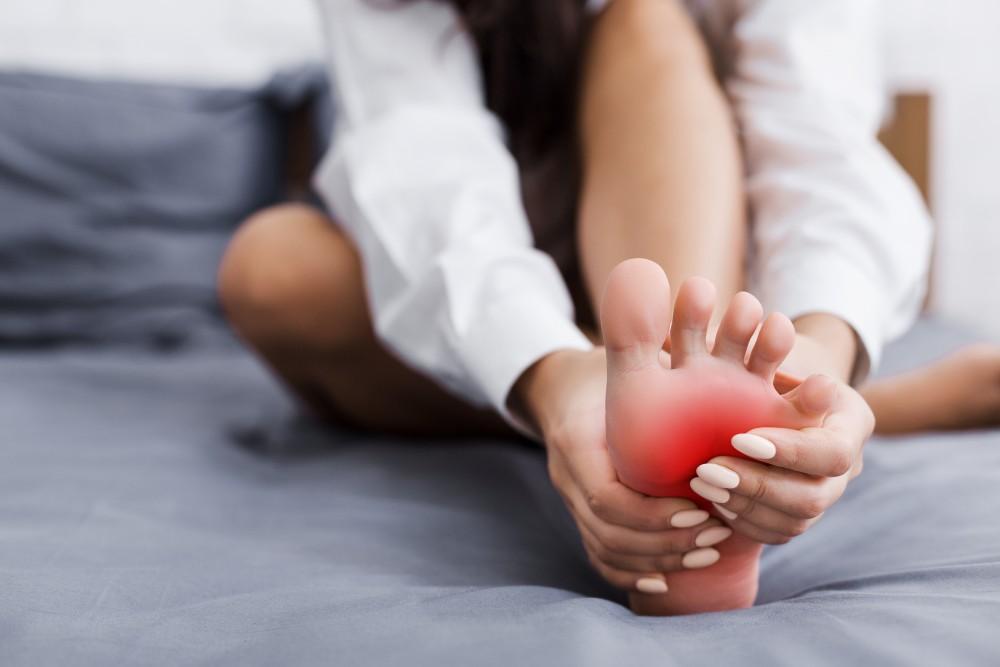
All About EPAT® Therapy for Achilles Tendonitis

According to Greek mythology, the mighty warrior Achilles had tremendous strength and courage. However, he wasn’t invincible. Even though more than one story exists as to why his heel was the one vulnerable part of his body, it’s where we got the term “Achilles heel,” as a way of describing an otherwise robust person’s lone susceptibility.
Achilles tendonitis is a common but painful repetitive stress condition that affects the band of tissue that connects your calf muscles to your heel bone. The Achilles tendon is your body’s largest tendon. The telltale pain that radiates down your calf to your heel can make many activities nearly impossible, from climbing stairs to playing a sport.
The stellar podiatry team at Premier Foot & Ankle, with eight Texas locations, approaches your care with knowledge about the most advanced treatments for Achilles tendonitis — and all other foot and ankle issues — as well as with warmth and understanding. They’re always willing to listen, answer questions, and provide the support you need as you move toward improved well-being.
Main symptoms of Achilles tendonitis and who’s at risk
You probably have Achilles tendonitis if you experience:
- Significant, persistent pain and stiffness along the tendon and back of your heel
- Inflammation
- Worsening pain the day following exercise
- Tendon thickening
- Limited mobility, especially in terms of walking, running, jumping, and climbing stairs
Ironically, the discomfort caused by Achilles tendonitis-related inactivity can lead to additional pain. And ignoring Achilles tendonitis can lead to worse conditions, such as a rupture of your tendon.
The condition is common in weekend warrior types, especially if they’re into basketball or tennis, as well as runners who suddenly or significantly up the length or intensity of their runs, or run on uneven terrain. In addition to activities that put you at risk for Achilles tendonitis, factors that you can’t control also figure in. Risk factors include:
- Being male
- Advancing age
- Being obese
- Taking certain antibiotics
- Neglecting your feet by wearing athletic shoes that don’t fit properly or lack support
- Having flat feet
- Living with different leg lengths, even if the difference is very slight
- Pronation, or when your feet turn inward while walking or running
- Ankle instability
Interestingly, certain health conditions, like psoriasis and high blood pressure, can make you more prone to Achilles tendonitis as well.
Game-changing Achilles tendonitis treatment
Some people with Achilles tendonitis get relief from treatments like physical therapy, medical devices like night splints or custom orthotics, and nonsteroidal anti-inflammatory drugs — NSAIDs for short.
However, an advanced treatment we’re excited about that brings lasting relief quickly is called Extracorporeal Pulse Activation Technology (EPATⓇ). This is a type of shock wave therapy that jump-starts your metabolism, hastens your healing, and improves your blood circulation — all critical to Achilles tendonitis recovery.
EPAT is the result of intensive research, exhaustive clinical trials, and reliance on the most advanced technology.
EPAT therapy offers you significant benefits over other treatments:
- Completely noninvasive
- Safe and FDA-approved
- Short treatments averaging about five minutes each (typically 3-5 weekly treatments)
- Healing time is cut as compared to traditional treatments
- Treatment series is customized for you by your doctor
- Patient satisfaction rate of 80%
- No post-treatment downtime
Our patients think EPAT is miraculous, and we do too. Treatment with EPAT for Achilles tendonitis and many other conditions also has regenerative qualities, which means it not only aids in your tissue healing, but helps grow new tissue.
EPAT therapy specifics
We want you not only to get relief from the life-altering pain and swelling that accompanies Achilles tendonitis, but also to enjoy increased strength in your tendon, and EPAT is outstanding for these very purposes.
Many patients feel a difference after about three EPAT treatments, but four weeks post-therapy is the sweet spot for most in terms of realizing the greatest benefits.
An EPAT treatment is comfortable and short. First your doctor applies a gel that’s used when you get an ultrasound of any sort — to help deliver the shock waves more efficiently. Then they move a device in small circles to administer the shock waves on your targeted treatment area.
After EPAT, you can walk right out of our office and feel no worry about putting weight on your feet! And if both Achilles tendons are affected, we can treat them simultaneously.
Call the Premier Foot and Ankle office most convenient to you to schedule an EPAT consultation, or request one online today.
You Might Also Enjoy...


Lapiplasty: How 3D Bunion Correction Works

How to Get to the Root of Your Chronic Heel Pain

5 Ways to Care for Your Athletic Feet This Year

How to Keep Toenail Fungus From Spreading


